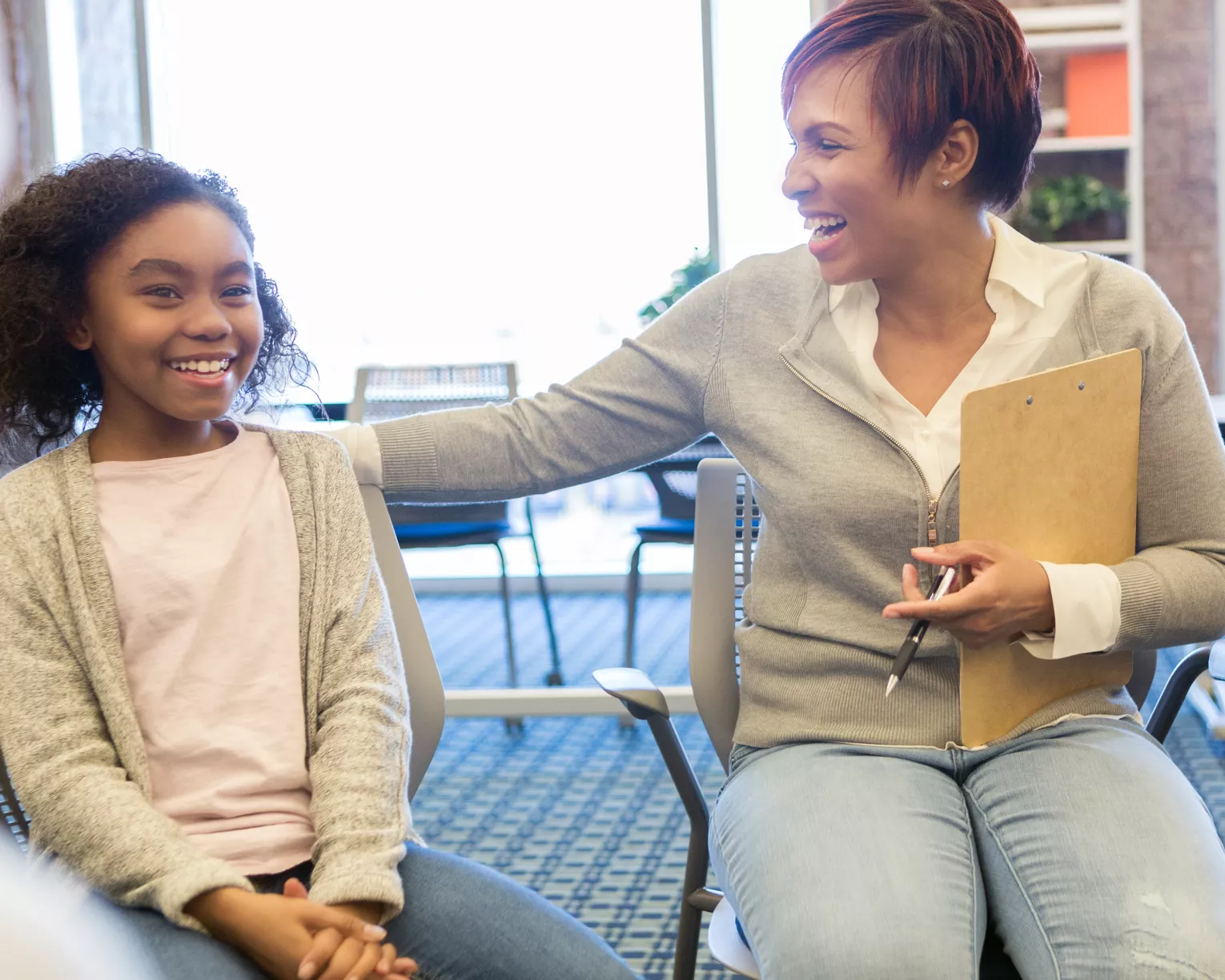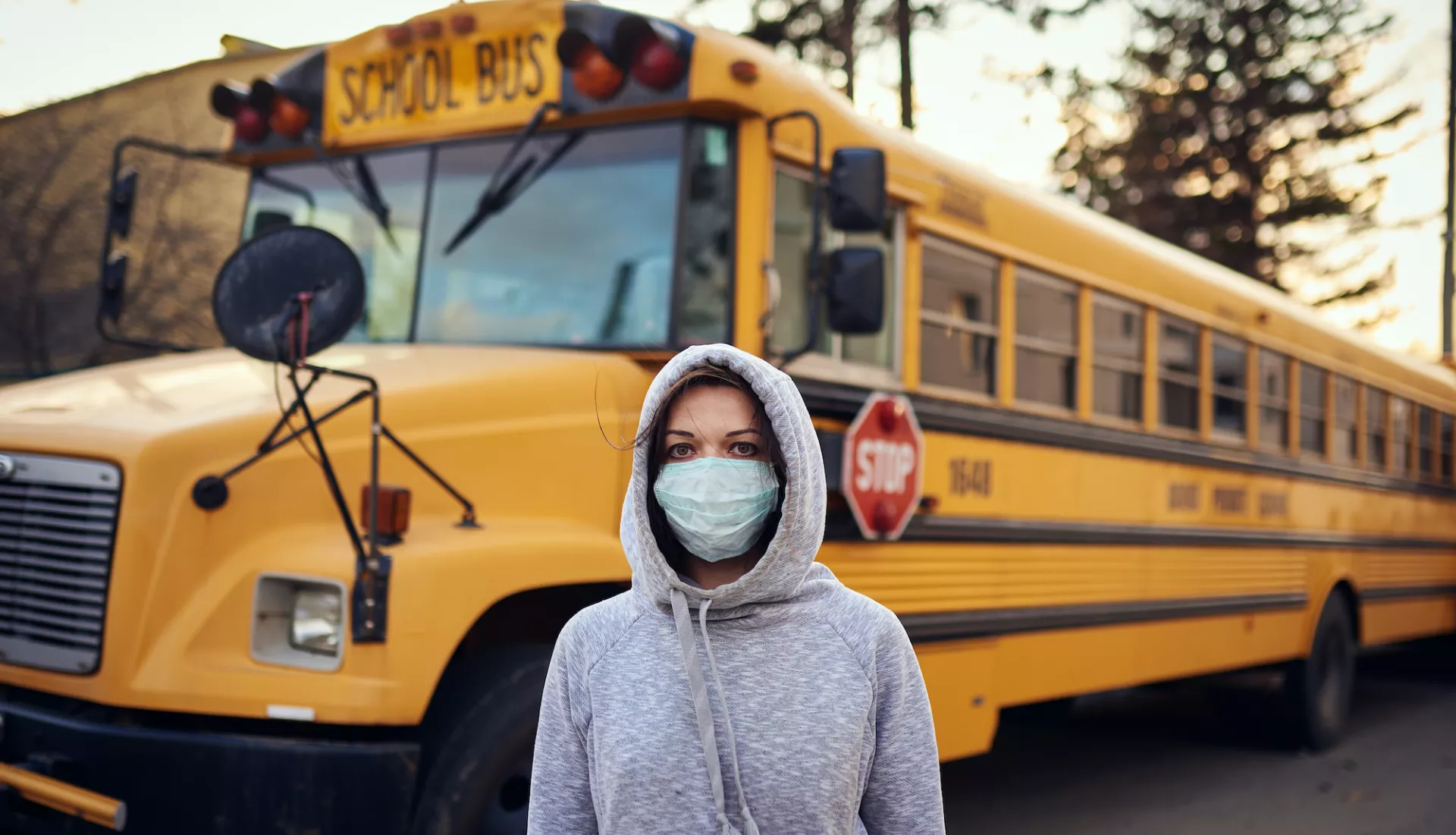Key Takeaways
- ESPs help educate the whole child and also have insights into student wellbeing that must be considered.
- Addressing the mental health of students requires the attention of the entire school community.
- With training, ESPs can offer social and emotional support on the bus, in the cafeteria, or in the hallway.
Holding the hot, syrupy coffee with both hands, she walked down the gravel path to Bus 94. She climbed the three deep steps leading up to the torn vinyl driver’s seat, and turned to scan the narrow and dark aisle, graffitied seats, and endless memories. The first stop—seven blocks away.
This stop always activated a prayer of desperation. Would he be waiting by the drive kicking rocks, or would she feel the stillness from the unseeing windows of a house whose secrets had finally overcome him—painful secrets she would never learn? She dreaded the stillness most.
This is an excerpt from Dr. Lori Desautels’ upcoming book, Intentional Neuroplasticity, Our Educational Journey Towards Post Traumatic Growth, to be published in January 2023 by Wyatt MacKenzie Publishing, which shows how bus drivers and other educational support professionals (ESPs) have a unique and critical lens into the lives of students.
“All ESPs, including bus drivers, food service professionals, and custodians, can see patterns in students’ lives that teachers can’t see in the classroom,” says Desautels, an assistant professor at Butler University's College of Education.
She created an Applied Educational Neuroscience program at Butler to help educators recognize and address student adversity and trauma. “ESPs are critical touchpoints in the effort to help our students cope with behavioral concerns.”
The bus driver from the book called the first house on her route, “the house of stillness and secrets.” She told the school about the boy she picked up there, a first grader, who she noticed sometimes wore the same clothes several days in a row. She shared that his house was always dark, even in the dead of winter, and she suspected they had no electricity or the power had been cut off for lack of payment.
Create Protocols, Training for ESPs to Share Information
Though the driver shared this important information with administrators, it should be easier for all ESPs to provide details about what they see on the job. There’s no official protocol for ESPs to offer clues about what they see in the students they serve each day. Desautels believes it should be routine for ESPs to have a mechanism for providing information to their districts.
“We need to find a way to intentionally include ESPs in creating a full picture of our students’ lives and wellbeing,” she says.
In addition to providing them with a voice in communicating concerns about student welfare, ESPs can also, with training, provide social and emotional support on the bus, in the cafeteria, in the hallways or front office.
“The more caring adults offering consistent support the better we all are at helping ease stress and anxiety among students,” she says.
Desautels developed several strategies for bus drivers to build strong relationships, help students emotionally regulate and to create a culture of unified support for everyone on the bus. They can easily be applied by a custodian in the hallway, a secretary in the front office, or food service professional in the cafeteria.
The following are some of those strategies.
Special Hand Greeting
Develop three or four greetings, like a fist bump, exploding fist bump, elbow bump, or high five, and ask each student to pick one as their special greeting to share with the driver. This makes a student feel seen as a unique person and usually prompts a smile.
Share Buckets
At the front of the bus, the driver can keep two buckets or containers. The first can be labeled: “Grab a pick-me-up!” The second: “What’s on your mind? Share a worry or a celebration!”
When students feel like they need a little support, they can reach in the first bucket for a note card affirmation containing a simple phrase like, “I care about you.” Or, “I’m giving you a big hug. Can you feel it?” Or, “You are an important part of our school community.”
“These are like the cards you see at Starbucks that say things like ‘You Are Enough,’” says Desautels. “Parents could get involved by working on cards for the bucket together. They can be so fun to create with kids and there are so many simple affirmations, families can hand the driver stacks of them.”
The second bucket is a place where students can leave a note or drawing with a worry, problem, or concern, to help get it out of their system—the driver can check in later with any student about a worry if it seems warranted.
They can also share celebrations like a good grade, a win at a game, even losing a tooth. They can check a box for sharing and the driver can then read the announcements to the bus before the kids get off in the morning, or after they’re seated in the afternoon before heading out on their route.
If there’s no time, the driver can ask students to volunteer to read the celebration announcements.
Catch me!
Drivers can “catch” students doing or saying something kind. When that student gets off, they get a sticker or a simple, thank you for doing that, which contribute to students’ feelings of purpose and connection.
Thumbs up, thumbs down
When they board, students can check in with drivers to share how they’re feeling through a quick thumbs-up, thumbs-down, or neutral show of emotion. This is a great way to check in and notice patterns while creating a connection.
“All of us touch the lives of one another and ESPs who are intentional can notice different patterns, rhythms in behavior educators might not see in the classroom,” Desautels says. “A lot goes on the hallway or lunch room that our ESPs can take note of. Transportation personnel see the home environments of our students.”
COVID has shone a light on the gaps in our policies and protocols by not including ESPs in the gathering of information that can help schools address concerns, she says. They can provide details to school personnel who specialize in student mental health like counselors or social workers to help raise awareness and possibly help get families connected to resources.
Desautels, a former school counselor who spent the last year working as a co-teacher in an Indiana middle school, says she’s never seen such fatigue, emotional exhaustion and even hopelessness among education staff. That’s why connection strategies can be so beneficial.
“When adults feel a sense of purpose and there is a felt connection with a child, it changes your nervous system. It’s what Harvard researchers call a ‘Serve and Return,’” Desautels says. “It’s a rhythmic and bouncing back and forth, a gentle, fun and uplifting active listening and communicating, which lifts up the student and the educator. When we feel purpose and compassionate presence, and we share that, we feel like we are seen and we are heard.”



